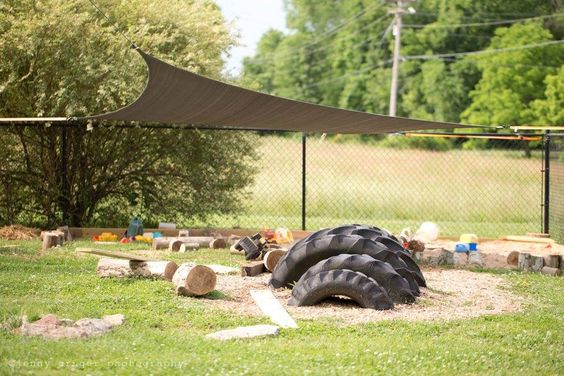
I am glad that you stopped by:
Now that I am retired I want to provide quality resources that are free of charge and free of advertizing on the web. Teachers, parents and care givers can be confident that they have a qualifed ally that aims to make the great outdoors a place of joy for you and your tribe.
Now onto creating a more confident you...
Superscript
Creating Moments of Wonder through Adventure
As parents we all have our weaknesses and we also have moments in our lives when we don't have the energy to concern ourselves with the thought that we are on a journey of creating a healthier happier adult. But there is a solution when you go outside to play in nature- your don't have to be a boss or even act like an adult.
You can enjoy being a kid again in the forest, desert or water that is just outside your door when you play with your kids. So find your little nature buddy (or buddies) and release your inner Peter Pan, or be inspired by Tinkerbells whimsy and play alittle while with your children. You are their most beloved playmate.

For kids, the natural world can be a place of peace, health and inspiration—and can launch a lifetime passion for conservation.” Richard Louv Sep 23, 2020
Connecting to nature everyday is free and it's a fascinating catalyst for wonder. Even more than wonder, studies show that time outdoors supports your child in every major developmental way - intellectually, emotionally, spiritually and physically. This is reflected in better creativity and problem solving.
Connecting to nature has important health benefits for all ages.Studies show outdoor time helps children grow lean and strong, enhances imaginations and attention spans, decreases aggression, and boosts classroom performance. In addition, children who spend time in nature regularly are shown to become better stewards of the environment.
Time in nature has also been known to reduce ADD symptoms as well as improve social relations, reduce stress, and increase well-being.
This is fantastic news for you as a parent, because it is something that you can provide so beautifully each day. You do not need wilderness to get the benefit of nature. Just a tree and a patch of grass will do perfectly.
We are all born full of wonder. Everything seen, tasted, touched, smelled is a first time experience met with imediate attention and exploration. Bask in the shadow of your little one's joy and curiosty. They surley know how to have fun in nature. They mostly look at the ground and love to collect flowers, stones and sometime sticks. However, a few prompts to look at the fabulous sky won't hurt. They sky and its weather, the moon and the stars at night, the wind, snow and rain. Of course there is also the age old activity of finding fun shapes in the clouds are very interesting to them.

TIP : Have you thought of taking your child with you when you walk your pet? They both need the sunshine and fresh air. And it will become a great bonding time with your children even in the winter.
Fear not: there are several nature apps and websites to help with the questions that your children ask that you might not know the answer too. Sometimes it is great to just say: "Lets look that up at home- together". The sense that you are interest in what makes them wonder, gives them a sense that its ok to not know eveything and it allows you to be a nature buddy and share from your heart.
Mother Nature's Health Benefits
Most people believe that the healing power of nature has some impact our emotional and physical well-being. And there is mounting evidence, from dozens and dozens of researchers, that nature has benefits for both physical and psychological human wellbeing,” says Lisa Nisbet, PhD, a psychologist at Trent University in Ontario, Canada, who studies connectedness to nature. “You can boost your mood just by being in nature, even in urban nature. And the sense of connection you have with the natural world seems to contribute to happiness even when you’re not physically immersed in nature.”
A natural environment or even a high-quality photograph of a beautiful landscape can relieve anxiety, reduce anger and fear, lower heart rate and muscle tension. The therapeutic impact of the nature truly has no limits.
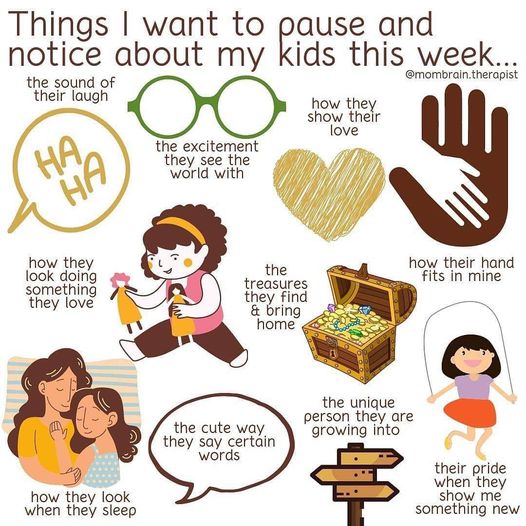
Step outside your door for FREE Stress-Relief
Urban areas are home to more than 84% of Americans, and with that, exploring nature has become less of a normalized practice. We don’t prioritize, let alone validate, the basic human need for connection with mountains, water, and trees (in addition to the fact a majority of people view natural connectivity as a touch woo-woo). Instead of viewing nature as an inconvenience or a woo-woo holistic medicine, we should be viewing it as free therapy.
Matthew Miller notes in this article that the human body is “fully conductive” and the earth pulses out an electromagnetic frequency that immediately grounds our bodies whenever it touches the earth directly. Twenty years of medical studies on grounding show that when we are connected to the earth’s energy, everything from our brain waves to our muscle tension positively responds to grounding.
THE BIGGEST TAKEAWAY FROM ALL OF THIS IS THAT EVERYONE WILL FIND SOME NATURAL BENEFIT TO LOG OFF, UNPLUG, AND TAKE A MUCH-NEEDED WALK, OR SOME SIT AND RELAX TIME.
EITHER WAY, CREATE SOME FUN OR FIND YOUR JOY WHILE RECONNECTING WITH NATURE
Here is a FREE link to a guided meditation to get you started- If that is what you are into
Amazing nature-connected coach Jenya Kuvshinova has some wonderful thoughts on using nature to boost resilience - I’ve been lucky enough to hear them first hand on hikes and over her delicious home cooked meals - and she has a whole webinar available on YouTube if you are interested in diving deeper with her. At minimum, I encourage you to experience the meditation piece, which I’ve cued up below. All you need is a quiet space (even better if you are outdoors) and have some sort of natural element with you, whether you grab a stick, leaf, flower or rock while outside, from outside or from that cute house plant.
I hope you find beautiful places to spend time with your little ones...



Superscript
Family Day Trips
Passing Down the Love of Nature
Go ahead, try some of these fun outdoor activities for kids together.
Not only will you nurture the love of nature in your children, but you will also strengthen your relationship with them through quality time spent together.
Let nature be a foundation for creating wonderful memories with your children and grandchildren.
Who do you think will enjoy the following Adventure Days more, you or your children?
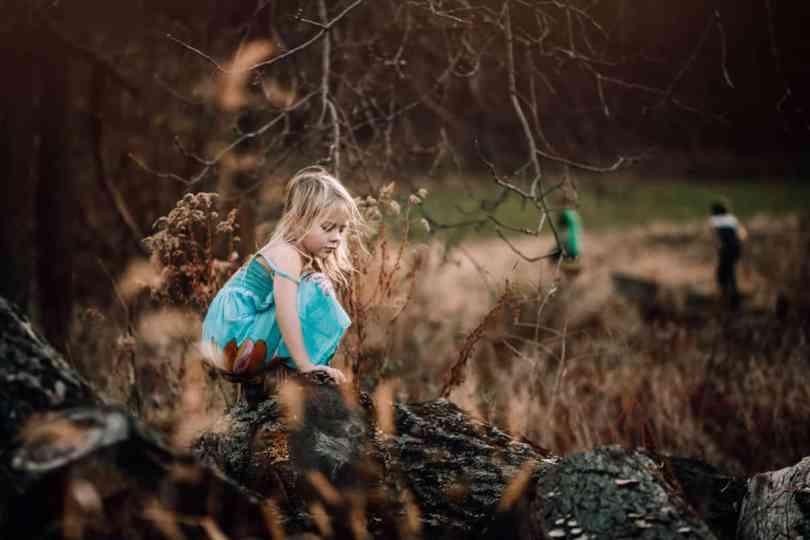
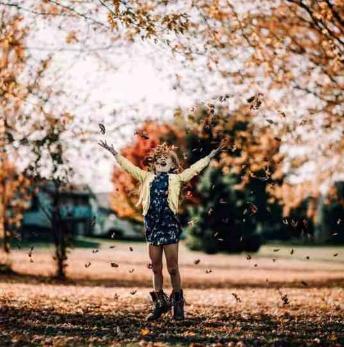
kids love going outside in the dark even on a simple walk to the shops. It’s in The Tiger Who Came to Tea so it must be true! Stargazing encourages an interest in science and is a great family activity – lying in sleeping bags to identify constellations, meteors, planets and the International Space Station. Discover a dark sky area near you.


this isn’t an obvious beach activity due to our chilly and choppy seas but it’s a great skill that gets you right where it’s happening in nature. There’s more marine life within a few feet of the beach than most of us realize. Kids of the Wild has coined the phrase ‘Goggling’ for our invention of wildlife-watching with goggles while leaning off an inflatable! Read how much fun this can be in goggling – the new snorkeling..
walking is such a cheap, easy and beneficial exercise we all need to do it more. Your school-walking kids will easily transition to longer walks as they get older and teens can be challenged to climb ever-taller peaks. Encourage struggling youngsters with these ways to make walking with kids wonderful
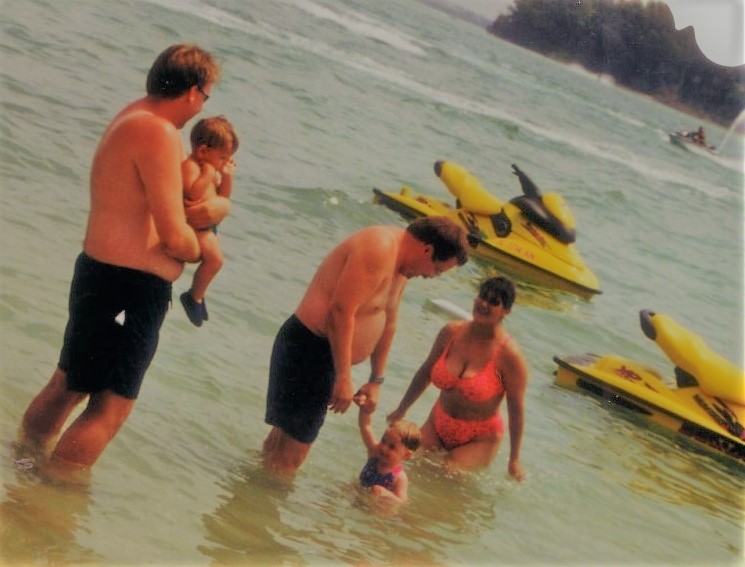
Wild Swimming –
swimming is a really important skill and outdoor swimming has added excitement. Prioritize safety/tide times etc and find natural rock pools, sheltered beaches and secluded lakes and rivers in the USA wild swim holes. Read about our wild swimming adventures with wildlife.Sail or paddle away on a Boat, Canoe or Dinghy – that mild fear of potential capsize is what makes messing about on boats exciting for youngsters. We grew up with an inflatable dinghy and have recently bought an inflatable canoe for family river fun. Always think safety, especially with inflatables and use buoyancy aids and safety ropes, especially at the beach.
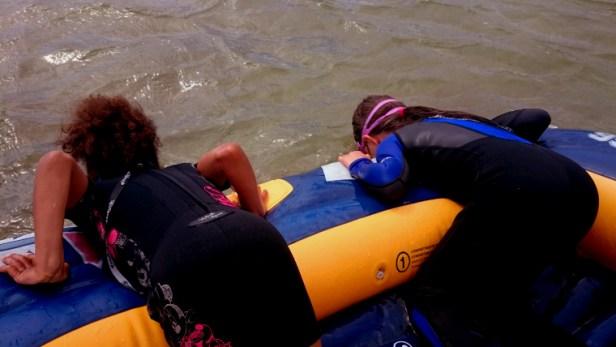
Getting outdoors benefits everyone in ways both obvious and surprising. Hopefully these ideas will help families get outside more – please share with any friends who might need a nudge into the wild. Once you’ve addressed the ideas and issues discussed above, it’s time to get outside and learn to embrace nature and the outdoors. There’s so much out there waiting for you. So many adventures to be had and memories to make. Let’s get started embracing nature and becoming more outdoorsy.
Turn Any Walk into an Adventure
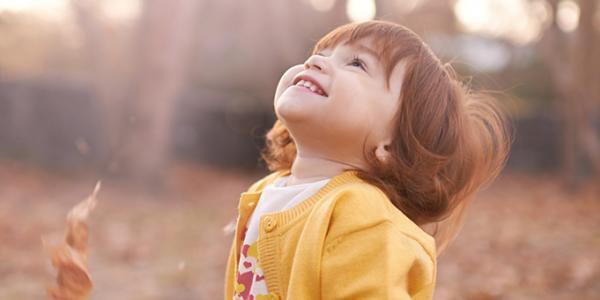
Every walk is an opportunity for children to learn about the natural world. Walking around the block with my child when he was 2 years old could take an hour because there was always something new to explore.
As you explore your neighborhood, yard, patio, or the nature you find outside your window:
Be open to the wonder of noticing small details and new growth.
Keep the safer distance of 6 feet from others who are not in your household.
Leave electronic toys behind so children can focus on the world around them.
Bring paper and crayons so children can draw what they see if you bring your cell phone and need to take a call.
Bring a digital camera with you so children can take photos of things that interest them to share with [far off, distant] family members. And you can take other photos to print to create a scavenger hunt for children the next time you take the same walk.
Walk at different times of the day or night to increase your chances of seeing something new.
Ask, “What’s different about what you see today?” each time you and your child walk outside.
Play “I spy with my little eye” from your window and help children learn to give clues about what they spied.
Model using all five senses. You might say, “I’m seeing the big clouds,” “I’m touching the wet grass,” “I’m hearing the jets of an airplane,” or “I’m smelling the fallen pine tree needles.” It’s not safe to taste many things outdoors, but you can “taste” the air.
Carry along an inexpensive magnifying glass so children can get up close and personal with nature. Many smartphones have a magnifier app.
Make dressing for the weather part of the learning experience by singing songs about the weather as you and your child put on sunscreen, hats, or several layers of clothing. Try “You Are My Sunshine,” “It Ain’t Gonna Rain,” or “The Mitten Song”. Let your child work to figure out how to zip a zipper or put on boots just long enough so she can learn these tasks and not so long that she becomes frustrated.

Observe the weather
On the walk, or even as you look or step outside, use your magnifying glass to look closely at drops of rain hanging from a leaf or to examine the structure of snow. If it has recently rained, take a medicine dropper so your child can suck up rain from puddles and squirt it back out again. Watch where the water flows and ask, “I wonder where it will go from here?” If it is sunny, make shadows with your body or jump over the shadow of a family member. Use sidewalk chalk to draw the shapes of the clouds you see. Track the path of the sun as it appears to move across the sky—where is it in the morning and where is it at bedtime?
Animals

Use your magnifying glass to look closely at small wildlife such as non-poisonous spiders, roly-polies, worms, and any non-stinging insect that will hold still long enough. Ask your child to show you how the worm or ant moves and join in as he wiggles or crawls. Ask your child to think about how well animals move even though their bodies are so different from our own.
Count the number of larger animals you see on your walk. Is the neighbor’s cat in the window again? Look for birds in bushes and on electric lines. Are there cows in the field, squirrels in the trees, or dogs going for a walk around the block? View birds on live “cams,” a virtual window into the natural world of birds. Talk with your child about what these animals are doing.
Animals and habitats in your state is great for knowing what is out there in your neck of the woods.
Plants

Look closely at the different shapes, sizes, and structures of leaves and flowers (but watch out for thorns and poison ivy). Collect leaf shapes and then make rubbings of different types of leaves. To do this, put a piece of paper over a leaf resting on a hard surface, then rub or wipe the paper with a crayon held sideways to reveal the leaf’s veins and edges. Collect fallen leaves and seeds by pressing them into the sticky side of a loop of tape. Ask your child to measure how tall a plant is in relation to her body (“This bush is as tall as my knee”).
Observe changes in the life cycle of a plant. If a plant has a bud on it, ask your child to guess how many days it will take to open. Then count the days as you revisit the plant on your walks. If your children are old enough, have them record their findings in a notebook or with a digital camera.
Rocks

Use your magnifying glass to see the tiny shapes of crystals or pieces of sediment that make up the rocks in your neighborhood, including those that are used in buildings. If rocks are not part of the landscape where you usually walk, take a field trip to a local creek where you might see some naturally deposited rock.
Compare sizes and colors. Try using them as chalk on other rocks or on your sidewalk.

When Hope was little, the first thing that pointed out on a walk was a cluster of wildflowers.
I was delighted to take her closer in for a better investigation.
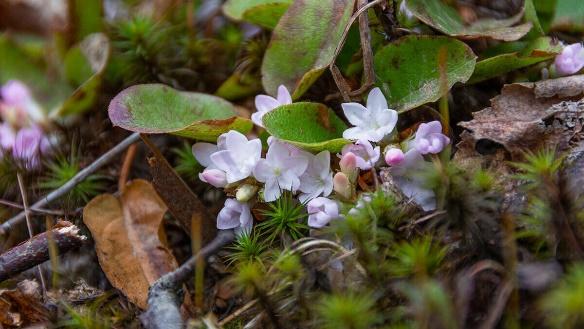
We all remember the first “give me hands” from our children, Hopes flashed hers to take the flower home. I debated the old rule of leaving all nature in its place. But I wanted to reward her interest, and tears welled up in my eyes.
Wildflowers were somewhat of a passion for me. Being raised in the Finger Lakes means there was a great deal of flowers, ferns, moss, and fabulous fauna in our woodlands and along our roads. From the first peek of the May flowers under a certain tree in our backyard, to the snow covering all the fauna, I loved watching the wildflowers grow in the woods behind the house. I was so excited that my daughter's first intriguing nature was with a wildflower. It meant we would be able to share a love of wildflowers and nature.That’s why my eyes filled with tears.
It was a great way to start a lifetime of intrigue with the wildlife. Today she is celebrating the first snowfall of the year in Wyoming, dancing her happy dance as the seasons change.

She says she is glad she was raised to enjoy nature. No matter what is happening in her life or where she is, nature calms and restores her... And nature is everywhere!
I hope you can create that same intrigue in the “wild life that I have. Here’s an easy little activity to start. We used it when she was little and she would still do this today as a 20 year old.
10 Ideas to Get You and Your Child Exploring Outdoors

10 Ideas to Get You and Your Child Exploring Outdoors
1. Go for a nature scavenger hunt.
Find something that:
Is a certain color
Is dry, wet, shiny, or pretty
Is tiny or huge
The wind blows
Crawls
Has no legs, four legs, or six legs
Or make up your own ideas!
2. Put a twist on your scavenger hunt:
Find three flowers that are different. Smell the flowers. Close your eyes and see if you can identify the flowers by smell.
Find a fuzzy leaf. Find a leaf that releases an aroma when crushed, such as sage.
Try finding things in categories, such as items with bark, items that are high, or items with branches.
3. Observe and photograph.
Examine items carefully and draw what you see. For example, find flowers of different colors and point out the petals and other parts. Or find a variety of leaves and observe the different shapes, colors, textures, and veins. You and your child can imagine you are scientists, observing and documenting what you see.
4. Follow an ant trail.
Look up and look down, look all around, and feel free to crawl on the ground. Place a small piece of food nearby and watch what happens.
5. Observe a tree throughout the seasons.
Watch for leaf and flower buds bursting in the spring, insects buzzing in the summer, and leaves changing colors in the fall. During all seasons, watch for visitors to the tree—birds and small animals looking for food or a resting place.

6. Find nature in surprising places.
Look for places to explore near where you live. Nature can hide in the cracks of a sidewalk, under the stairs, in abandoned lots, or on the edges of manicured lawns. Don’t worry if you don’t live near an open field, a forest, a desert, or a seashore.
7. Press flowers and leaves.
Find flowers and let them dry, pressed between the pages of a heavy book. Once they are dry, use them to make crafts. For example, put clear contact paper over the flowers to make a placemat. In the fall, try the same activity with leaves. Find orange, yellow, purple, red, or brown leaves. Find a dry leaf and crunch it!
8. Explore holes and mud.
In an out-of-the-way corner, dig a hole and pour water in it to see what happens. Ask your child where she thinks the water goes. Play with the mud, squish it between your toes, and jump over or in the hole. When you are done, fill the hole with dirt again, and check it later to see what’s growing there.
9. Explore seeds.
Find some weeds! How are their seeds dispersed? Do the seeds cling to your clothes, are they carried by the wind, or are they flung when the seedpods are touched? Ask your child what he discovered during this investigation.
10. Collect conservatively.
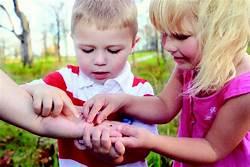
Discuss collecting with your child. If the ground is carpeted with acorns or flowers, it’s probably okay to take one unless it’s on a refuge where collecting is prohibited. Examine something for a few hours and then let it go again. Keep fireflies in a jar and release them the next morning. Transfer fish, turtles, or frogs to an aquarium for a night. Some fish will survive in an aquarium if you transfer them with the same water from where you found them.
SIMPLE NATURE WALK ACTIVITIES
Look at the Clouds Talk about the shapes and colors. Watch them move.
Collect Leaves Find leaves, stack them, talk about their shapes, colors, and sizes. Which leaf is bigger/smaller?
Crinkle Leaves Talk about how it feels. Talk about the smells. Throw the little pieces of leaf in the air and watch them fall to the ground.
Collect Sticks Find big sticks and little sticks.
Play with Sticks You can stack them or build with them. Stick them in the ground. Throw them (safely, of course!). Break them. Dig with them. Rub or tap them against different surfaces and talk about it – “that’s loud/quiet”, “that’s bumpy/smooth”, etc.
Find Rocks Talk about sizes, textures and shapes. Line them up. Count them.
Stack Rocks See how many you can stack. Count out loud. Make it a fun challenge.
Bring Playdough Make imprints of rocks, leaves, sticks, acorns or tree bark.
Look at Birds Observe and talk about the bird’s behaviors.
Look for Bugs Flip over rocks. Observe and talk about the different bugs you see.
Observe Animals What animals can you find? Squirrels, lizards, turtles, ducks? Observe and talk about what you see.
Make Nature Stew/Pretend to Cook Pick grass, fallen leaves, weeds, etc. and mix together to make pretend stew.
Pick Up Litter If you see litter, pick it up and take the opportunity to talk about littering. Make sure you use hand sanitizer afterwards!
Sit on the Ground Take a break and just sit. Run your hands through the grass or feel the cool ground with your hands.
Lay on the Ground It’s amazing how laying on the ground vs. just sitting on the ground can give you a completely different experience and perspective.
Play in the Dirt Get those hands dirty!
Explore Tree Bark Touch it, talk about it, compare different ones. Look for fallen tree bark.
Go Climbing Kids love to climb – it’s in their nature (see what I did there!). While ensuring safety, allow kids to climb on tree roots, tree limbs, tree stumps or large rocks.
Drive Toy Cars Through Various Terrain Bring along a little toy car. Have fun driving it through the dirt, grass, rocks, tree roots and other various terrain.
Bring a Favorite Toy Bring along your child’s favorite toy and incorporate it in your nature adventures!
Have a Picnic Bring along a snack or meal to enjoy on your nature walk.
Smell Flowers Stop and smell the flowers!
Draw Nature Bring along some paper and crayons. You can your child can draw things you see on your nature walk.
Draw With Nature Using water and dirt, you can draw on paper or pavement.
Splash in Puddles Go on a nature walk after a rainstorm and you may come across some puddles – perfect for jumping in and splashing around.
Take off Your Shoes Take off both your shoes and feel the grass and dirt under your feet. Talk about what it feels like (is it warm/cold? is it smooth/rough? does the grass tickle your feet?)
Sing Songs Sing some of your favorite songs while outside.
Listen to Music Play some music from your phone. It can be relaxing or upbeat!
Dance Get all your kid’s wiggles out! “Freeze dance” is favorite in our house that always gets us dancing!
Act Out “We’re Going On A Bear Hunt” If you haven’t heard of this book, we highly recommend it! There’s also various renditions of the story in song form!
Pretend to be Different Animals Let your surroundings inspire you! Can you pretend to be a bird? Or let your imagination run wild! Is that cow I hear?
Play a Game of Tag Run around and chase each other (if it’s safe to do so!).
Read a Book It’s amazing how reading a book outside can totally change the experience!
Stretch/Do Yoga Use nature as your inspiration! “Can you reach up and stand tall like a tree?”
Make a Birds Nest Gather some sticks and twigs and see if you can make a birds nest.
Talk About Colors Look for specific colors (for example, things that are yellow) or point out what colors you see.
Talk About Sounds Point out the different sounds you hear.
Talk About Shapes Point out any shapes you see.
Talk About Letters Be on the lookout for any letters you see and point them out and talk about what they spell.
Talk About Smells There are so many different scents to be found outdoors! Smell around and talk about them.
Talk About Texture Feel various natural objects around you and use them to teach about the different ways they feel.
Discovering the Woods with Older Babies
& Toddlers
When you get to the woods, watch them explore and see what they do on their own without offering suggestions. Do they run? Build? Climb? Even an activity as simple as digging leads to exploration. Children learn how to dig, the way soil feels, the angle of the slope before loose dirt slides back down, and the difference between dry and wet soil.
Ask open-ended questions if they are old enough. As children explore on their own, remain involved. Ask about their discoveries. Ask open-ended questions they can understand and answer with their observations. “What did you find? Oh, a bug? What does it look like? How does it move?” You do not have to know all the answers to children’s questions. Discuss what you see—the shape of leaves, the color of the soil, the movement of the grasses. The more your child observes, the more the world around him will make sense. Discovering how to learn through observation is important. Your child doesn’t have to know the names of all the plants and animals he finds. He will learn through his observations. You can even suggest he make up descriptive names of his own.
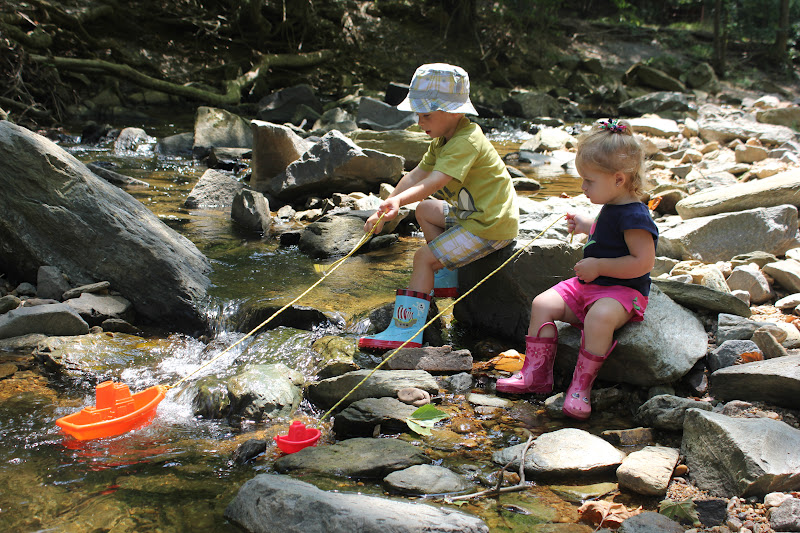
Touch, lift, look under. Children need to touch the natural world to more fully understand it. In some cases, gently touching an object with one finger may be helpful. For example, gently nudge a frog or a grasshopper to help a child learn how animals move. When possible, though, examine an object from all sides. Looking carefully at the underside of a log and then carefully replacing it, for example, helps children understand that creatures live under the log and that not disturbing the creatures’ habitat is important.
Guide children to draw conclusions from the observations they’ve made. The best learning occurs when children come to conclusions for themselves. It would be easy to draw on your own knowledge to say, “It’s fall now. See, the leaves are red. Remember that they used to be green?” Instead, try asking questions or describing what you see, feel, hear, and smell. “Do you remember what color the leaves were last time we took this walk? What do you see now?” This modeling will help your child learn to use her own senses when exploring. Remembering and sharing helps a child learn, and shared memories bring cohesiveness as a family.
Adventures In The Great Outdoors
When you take children to a new environment, one thing you can count on is questions. Be prepared.
What is that?
Does their mom take care of them?
What do they eat? Can I bring them some lunch tomorrow?
Are they nice to people?
Will they hurt me if I give them a hug?
What do they do if the clouds get crabby?
Where do they sleep?
How do they build their homes?
How do they know how to do it?
Hope’s favorite question…Why did you forget the camera? LOL
The boys didn’t care about reading about the animals and plants until they needed the information on how to care for one in the chance of an injury. Their favorite trip was Glenwood Springs, where they could Hope was the real Boyscout in being prepared for anything. She loved to go to the library and read a book together about what we might find as we went exploring somewhere new. She would be all excited that she just learned about something new. She also liked to find a picture in the boys old Ranger Ricks magazine or on the computer and put it on a piece of paper with a date. She wanted it to tell her dad what she was ready for. I put them in a binder, and it was an organizer type thing for the trip .
Another tip I’ve learned over the years is to prep as much as you can the night before. Set out clothes. Pack up snacks. Get water bottles ready. Also, don’t forget to talk to your children about your plans. I find things run smoother when my kids know what to expect. Then remind them again in the car or on the walk to your destination.
But I am getting ahead of myself. Let me start again.
In order for everyone to have the best trip possible, it’s important for everyone to be involved in the entire process. Planning is such a fundamental aspect to travel. Involving kids in that process will make your trip more enjoyable and memorable for the whole family!
How to Get The Kids Involved

Taking a family trip offers an exciting opportunity for bonding, learning, and exploring a new place together. Involving everyone in the trip-planning process is just as important as involving everyone in the trip itself, and that includes the kids!
Children may have varying levels of interest in the idea of “trip planning.” But they’re sure to become enthusiastic once they start to explore all of the fun things you can do together.
By involving kids in planning your family trip, we get them engaged on a deeper level. It’s hard to please everyone with every plan on the road. But when kids feel included in the planning process, they’ll have a better understanding of the trip as a whole. If there’s a portion that they’re not particularly enthusiastic about, they’re less likely to become agitated or bored if they have a say in what’s coming next.
Building anticipation for your family vacation can be a bonding experience in itself. So get everyone involved right from the very start, and you may find that the whole experience will be more rewarding. Here are a few tips to help you through the process…
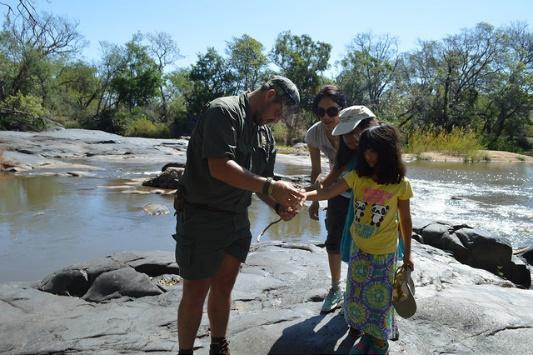
Make planning your family trip fun!
It’s to be expected that everyone will be anxiously awaiting your big family trip. But don’t forget to enjoy the planning portion! Planning for a trip is naturally a fun and exciting experience. Research actually indicates that people are happiest in the planning stages of travel.
Don’t forget to make it fun for the kids, too! Planning for your travels can involve kid-family research. Consider what type of planning activities your children will most enjoy, and build that into your planning process.
Watching movies about the destination, listening to music from the culture, reading books, and browsing family travel blogs as a family are all great ways to get the kids involved. A chalk board that kids can write ideas on helps create a visual reminder of the fun to come and encourage them to be creative.
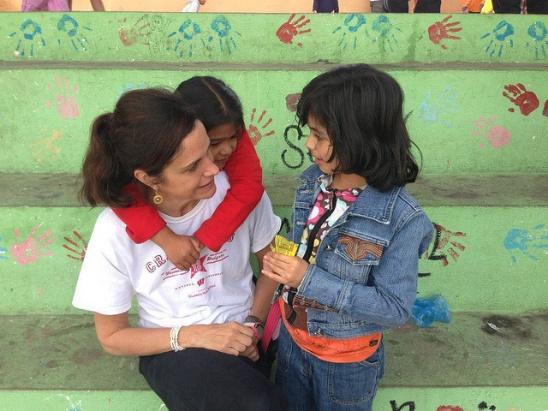
Learn about your destination together.
We all know how brilliant our kids are. Their brains are little sponges, ready to soak up information and experiences.
Being informed about a culture is important for travelers of any age. Your trip will be much more enjoyable and informed if you do a little research and prepare yourself for the cultural differences. This applies to kids as well. If they’re prepared for your family trip, they’re less likely to be overwhelmed by the newness of it all.
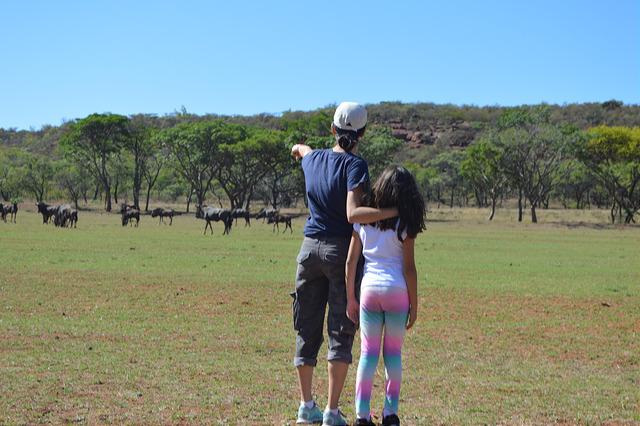
Research activities that are related to their interests.
What types of activities does your child enjoy at home? Incorporating their interests into your family trip is a great way to get them excited for what’s to come.
While trying new things is always going to be an important and exciting part of travel, the familiarity of activities they enjoy at home will allow your kids to connect the dots.
Do they love playing soccer? Attending a soccer game in Brazil will give them a whole new perspective of what it’s like to be an enthusiastic fan. Do your kids love animals? A trip to work with sea turtles in Costa Rica could be a dream come true.
The options for incorporating your child’s interests into planning your family trip are endless. Let them tell you what kind of activities they most enjoy at home. Together, you can try to find ways to explore variations on those activities once you reach your destination.
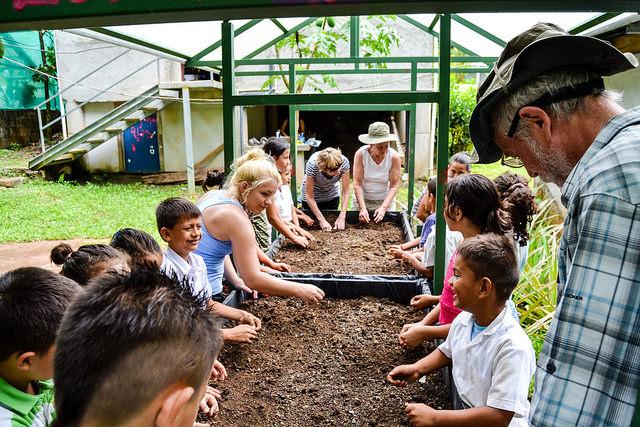
Give them options to choose from.
Planning a family trip can be overwhelming. There are so many places to explore and things to do. Where do you even start?
You don’t want the kids to feel overwhelmed of confused by their role in the planning process. Giving them some direction in how they can contribute their ideas that make them excited for your trip will keep things manageable and stress-free. Based on their interests, establish some options for them to choose from. You can discuss these options together and decide which activities should be the top priorities.
It’s great to have some flexibility when you travel. But it’s also easy to let our plans run away from us. We don’t want to disappoint our kids by making plans that fall through. So make sure that everyone understands that travel plans are flexible.
You may never know what’s going to happen on the road, but you know it’s going to be fun!
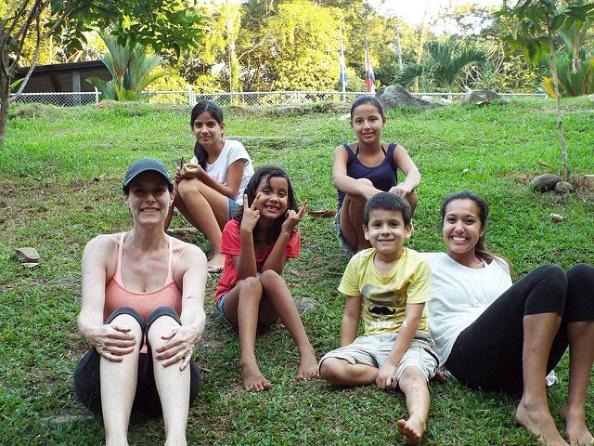
Consider giving them a day or time that’s all theirs to plan.
(I laugh at this becuase Hope likes unscheduled time for free play or fun that we find once we are there.)
If time allows, giving kids a day or a afternoon that’s all theirs is an exciting opportunity for them to take a more adult role in their family trip. By giving your kids ownership of a significant portion of time, they’ll feel a sense of responsibility. That way, they know it’s not all up to the parents!
If you have multiple children you’ll be traveling with, perhaps they can split a day, or work together on crafting the ultimate kid-friendly day of adventures. By giving them some freedom to plan on their own, you’re giving them permission to take ownership over the outcome of your trip.
In order for everyone to have the best family trip possible, it’s important for everyone to be involved in the entire process. Planning is such a fundamental aspect to travel. Involving kids in that process will make your trip more enjoyable and memorable for the whole family! –Britany Robinson
What to do if you are not sure if you like nature
The good news is that you don’t have to be a typical “outdoorsy person” to get outside with your kids and enjoy nature. You don’t have to be into mountain climbing or thru-hiking. You don’t have to like bugs or own a bunch of fancy gear. All you need is an appreciation for the beauty of nature and what nature can do for you and your kids.
The benefits of getting outside are undeniable. We can all agree that playing outside is great for children. We tend to downplay how important it is for adults as well. Spending time outdoors reduces anxiety, improves overall health, and helps anyone feel more connected to the world and community.
You can seek nature experiences for your kids, but you can also take it to the next level and seek nature experiences with your kids. This can happen even if you are not outdoorsy or a natural-born nature lover, even if you are itching just thinking of walking in the woods with bugs, even if the thought of hiking is exhausting. You can work to overcome those negative associations and embrace the wonder of the world with your kids.
There’s nothing like having a friend to get you through some of the initial hurdles and make it less scary. Find friends with similar goals and friends who are natural-born outdoorsy people. Set up playdates with mom friends outdoors and let the kids explore together. Picnics, hikes, and camping are all great activities to do as a group. Take turns checking out new parks, new trails or new activities. Or you could even start your own forest playgroup with some local like-minded friends!
For more on this topic Click over to this webpage
How to get started with adventure days
Now that you’ve heard the benefits of Adventure Days, how can you get started?
Create a running list of possible things to do in your area. Continue to jot ideas down as you discover or think of them. Make sure there’s a little bit of something for everyone and a wide variety of big and small, near and far.
Scour your area for things to do near you. Facebook community groups are a great resource. Your local library may have programs or information on area activities. Don’t discount word of mouth. Ask other families where they like to adventure.
Explore. Sometimes you wander upon hidden gems, like trails or creeks or a neighborhood playground you never knew existed. When you’re driving, take note of “brown signs” in your area, which usually denote unique hidden-gem destinations.

It’s also fun to incorporate the seasons into your Adventure Days. Find a hiking trail or park that has obvious seasonal changes. Make it a point to return to that spot season-after-season and note the differences each time you visit. How have things changed? Every outing is an opportunity for learning.
You can also use the seasons to brainstorm ideas. Each season has its own built-in activities. Find an epic sledding hill in the winter. Go berry picking in the spring. Discover a small-town festival in the summer. Visit a pumpkin patch in the fall.
Want in on a little secret? You can stretch one activity into multiple ones. Want to find out how? Here are a few examples.
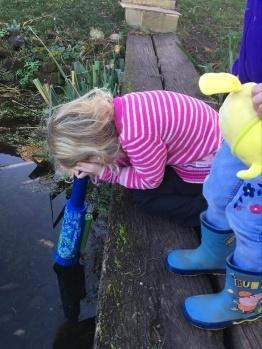
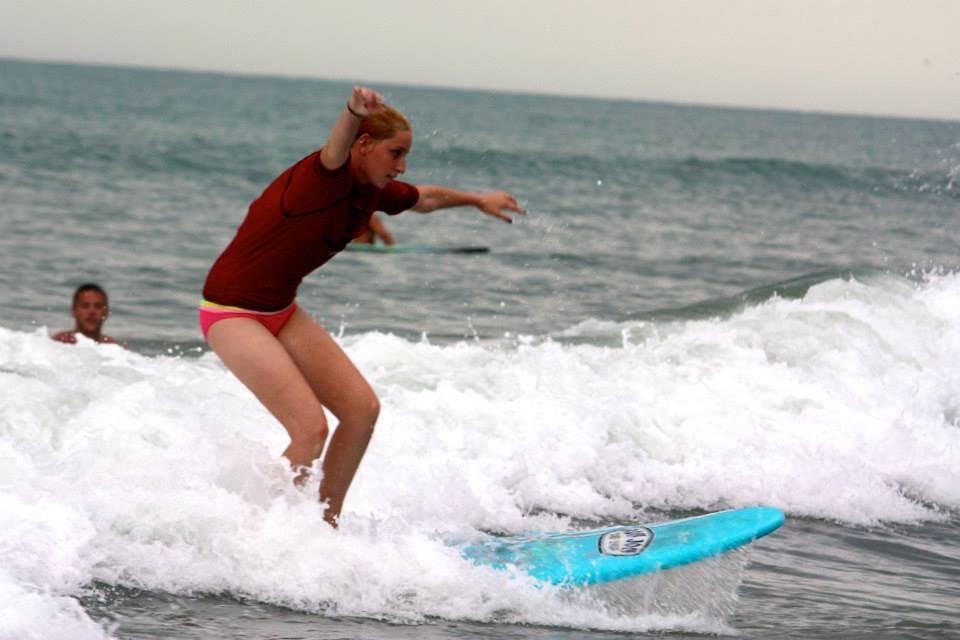
My ever versatile and adventure seeking daughter-
Go on a leaf hunt in the fall to find as many different colors and kinds of leaves as you can. You can collect the leaves to use for other purposes later, like a leaf crown or a leaf collage. One of our favorites is to make leaf monsters by gluing leaves onto a piece of paper, adding googly eyes, and drawing arms and legs. This is a great way to turn one activity into several.
Another example of creating multiple activities from one is with rocks. One day go on an adventure to find unique rocks. Then another day you can set up a painting station on your driveway and decorate them however you want.
Create rock animals or transform them into pretty
flowersyou name it! Then yet another day, set out in your neighborhood to hide the rocks for others to discover.
Hit up a farm or orchard to pick fruit, veggies, or wildflowers. Once your home, turn the fruits and veggies into tasty treats together. Or make little bouquets, corsages, or bookmarks with the flowers while camping or hiking in the country. Can you think of any other activities that can be multiplied into more fun for later?
Adventure Day ideas
If you’re stuck thinking of Adventure Day ideas, I created a list to get you started. I have them organized by categories: your simple, everyday ones; seasonal; and the grander affairs I like to call them Day Trips.

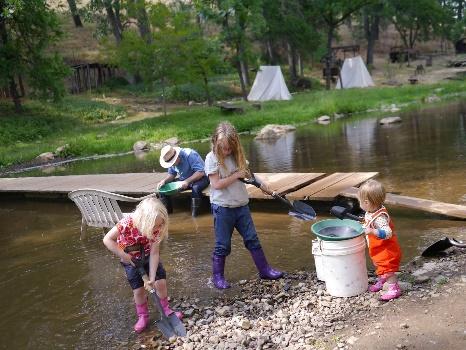
Simple
Skipping rocks
Nature bingo
Bike riding

Nature play
Nature crafting
Geocaching-Treasure hunting
Parking lot scooter races
Homemade obstacle courses
Sports fishing
Hiking trails
Skateboarding
Stick fort building
Chasing waterfalls
Rock or gem hunting
Gold Panning
Bouldering
Rock Climbing
Picnic by the River, pond or creek
Float down a river
Investigate shorelines
Sand boarding
Zip lines or Arial Adventure Course
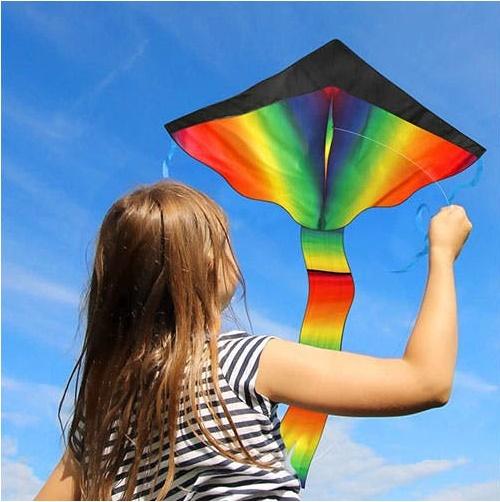
Explore a Botanic Garden or Zoo
Spying on Wildlife
Bungee jump or Sky diving
Riding ATV with parents
Go-karting
Mudding or 4-wheeling
Floor is lava at random locations
Small Motorsports or dual seater
Rock climbing with parents
Muck Hunting & Muck Inspecting
Swamp games
Bug Hunting
Frog hunting
Salamander or lizard catching
Discovering fun natural springs (We love the clear ones to see the wildlife.)
Visit a nature center or Refuge
Informal sports games (tennis, soccer, basketball, baseball, etc.)
Caving or exploring a mine
Gem, geode and crystal hunting
Become a Backyard Detective
New playground
On the water
Underwater SeaWalk or SeaTrek
White Water Rafting
Wild Swimming
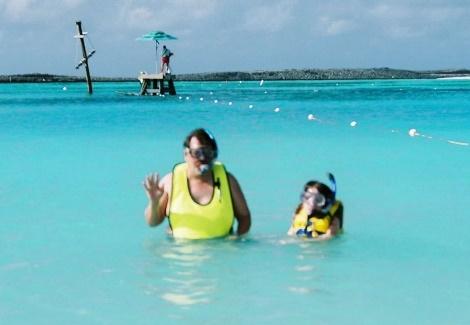
Flyboard Flying
Spinnaker Flying
Kayaking
Canoeing
Wakeboarding
Kneeboarding
Paddleboarding
Skimboarding
Bodyboarding
Water Skiing
Barefoot Water Skiing
Surfing
Cliff Diving
Jet Skiing
Kite Surfing
Windsurfing
Rowing
Parasailing
Underwater Scooter Adventure
Snorkeling
Motorboating with parents
Paddle Sports with parents
Magnet fishing
Cage Diving
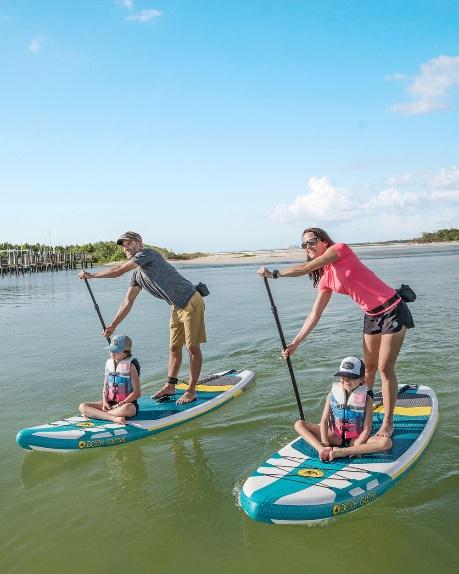
Deep Diving
Free Diving
Ice Diving
Scuba Diving
Aquathlon
Spearfishing
River Surfing
Underwater Rugby
Underwater Hockey
Underwater Football
Water Polo
Water Volleyball
Synchronized Swimming
Sailing
Water Aerobics
Seasonal
Pick your own flower farm
Spying on wildlife
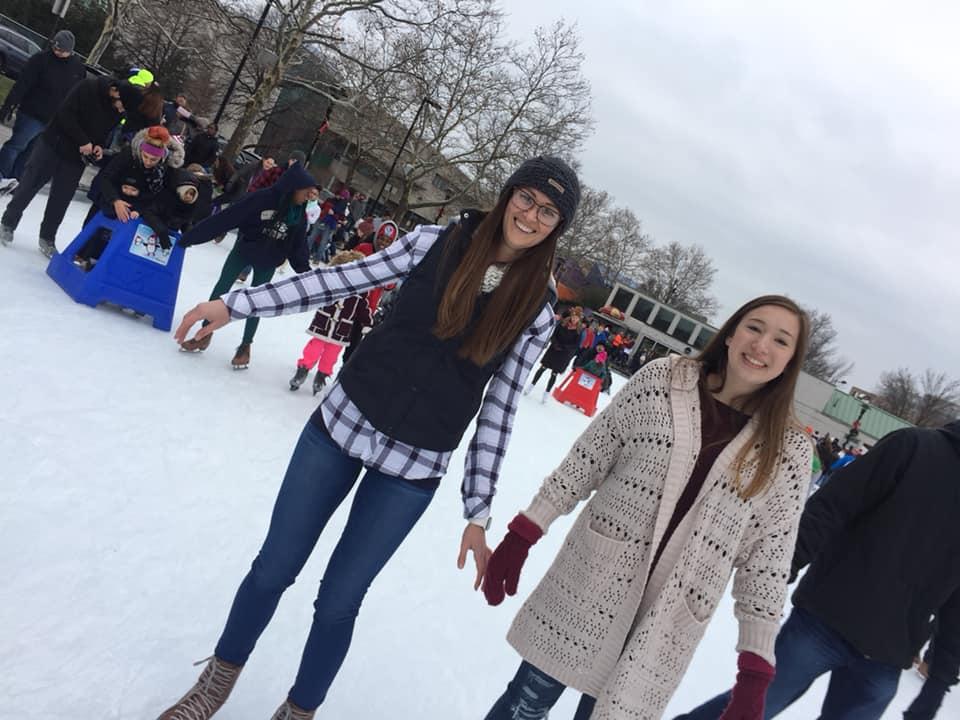
Puddle splashing
Dandelion wishes
Owling
Splash pad
Beach
Bug/frog catch and release
Parade
Leaf pile jumping
Corn maze
Pumpkin patch
Leaf collecting
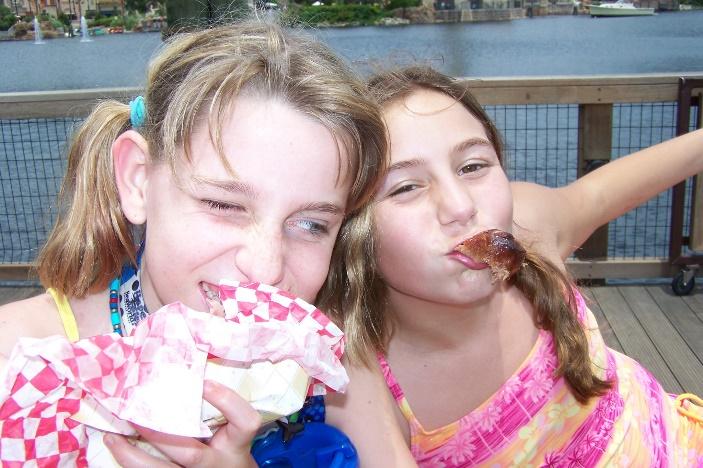
Sledding
Snowman building
Ice castles
Skiing
Cross Country
Day trips
State park
Nature center
Zoo
Wildlife Refuge or State Forest
Childrens Museum
Botanical or community garden
Golfing (mini golf, disc golf)
County fair
Festivals
Art or Science Events
Adventure Trails
Playground
Petting zoo or farm
Don’t forget to include your children while brainstorming. Sometimes they come up with the best ideas! Now get outside and start adventuring with your children!
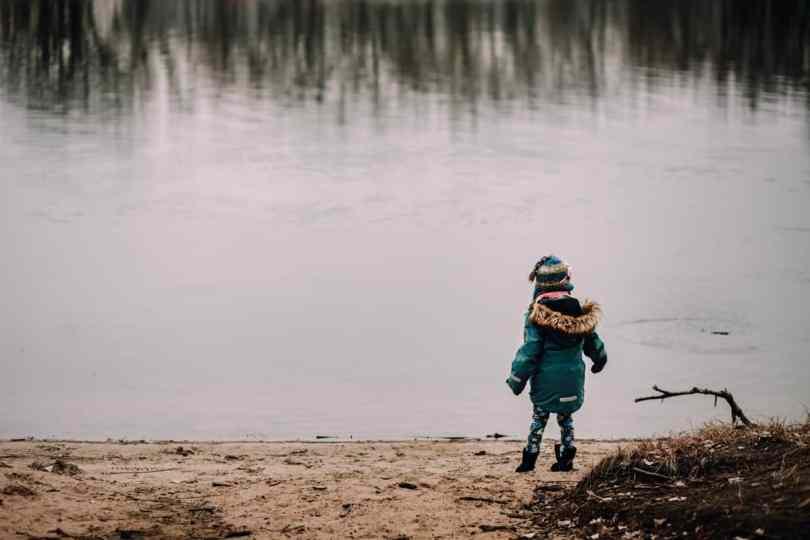
Nature Play That Rocks
It is hard not to notice how children and teens love to play. However, play has changed drastically since our generation. Unlike our childhood, when childhood was full of outdoor play, Moms and dads would tell their children to go outside when we were too unsettled or rambunctious.
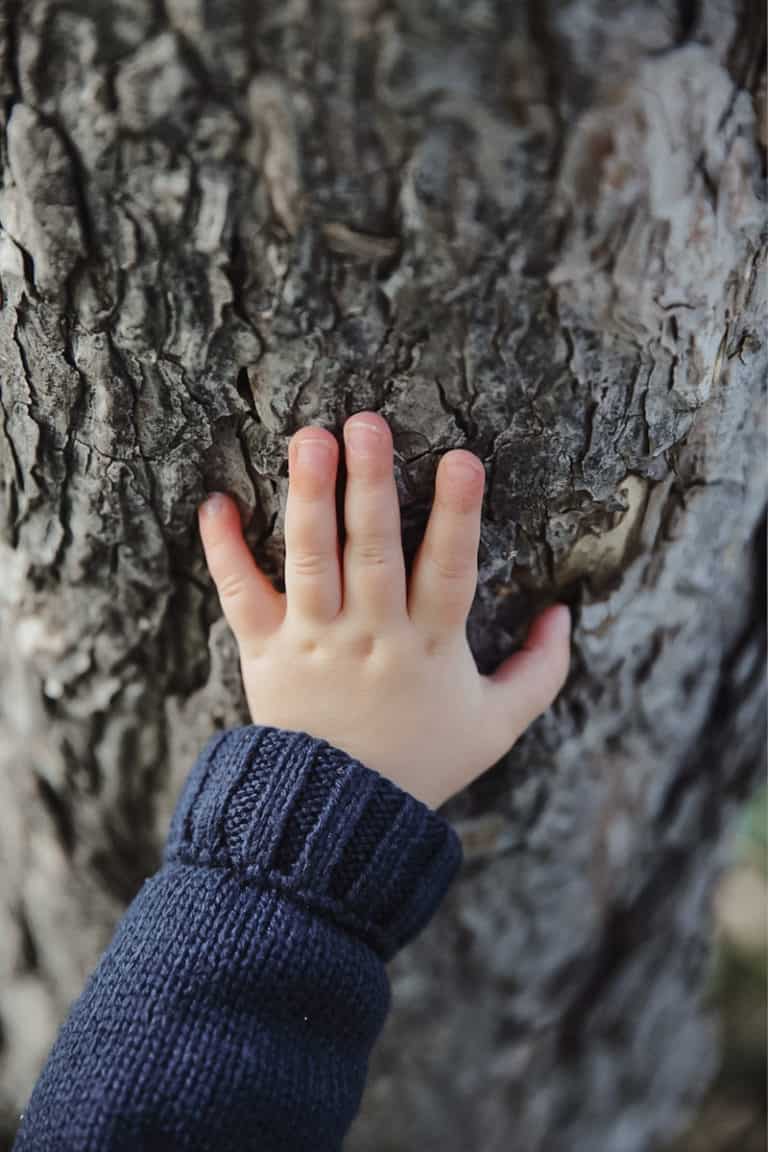
“Outdoors” meant free play and those that were lucky enough to have woods in their backyard escaped into the forest as much as they could. And neighborhood parks were often full of children at play: especially on weekends for family picnics.The Finger Lakes area offers many forests and parks full of ways to explore them. We got up early so we could get a spot under a pavilion, if we were planning to explore on land. But being on the water or in the water was the greatest joy for all ages. Children just had more opportunities for fresh air and unstructured play.
In fact, being outdoors was what we preferred as children. Our parents taking the time to picnic and play games with us was the ultimate pleasure. Even if it was only in our backyard, where our pets often stole our attention and were included in our play.
There is a growing body of research data about the multiple positive impacts of nature play on children’s social, emotional, intellectual, and physical well-being. Richard Louv has done a great job of reviewing these benefits in his best-selling book, Last Child in the Woods: Saving Our Children from Nature Deficit Disorder.



Multiple studies in several countries, over more than 25 years, have found that frequent, unstructured childhood play in natural spaces is the most common influence on the development of life-long conservation values and conservation behaviors.
Because frequent nature play is more powerful than
formal education, participation in youth groups, or
even the influence of parents and other mentors.
Nature play is strong stuff!
So what Is Nature Play?
Nature play is all about atmosphere and piquing their curiosity in the natural world around them.
Cambridge dictionary defines piquing someone's curiosity, interest, etc. as tbeing able to make someone interested in something and want to know more about it:
-The noise of they animals scampering through the trees continued, piquing her curiosity.
-She kept looking at the color or shine of the rock or flower that picqued her interest.
-The textures and fall colors of the forest floor and garden always pique her interest to get down and exlore them with all of her senses.
That is what spontaneous nature play is. The trick is to explore and experience it together.
What do you remember about your childhood nature play? Millions of Americans fondly recall playing outdoors in natural settings, doing things like:

Building tree houses;
Catching frogs and fireflies;
Splashing in creeks;
Daydreaming in a special hiding place; or
Digging holes “to China.”
“Mucking” around outdoors
Decorating mudpies with little bits from nature
These activities are all Nature Play: childhood play in “wild” areas of our planet, whether it’s the vacant lot next door, the local neighborhood park, or the “back forty” of your farm.
It is definitely not the old-fashioned concepts of nature education either.
It is a playful engaging experience in the natural world around them and it can be shared with both family and friends. At its very best, nature play isn’t always scheduled, planned, or led by adults. It is an experience or exploration to be shared and appreciated by all its participants.
Be supportive of their interests, and express interest in looking something up together when you get home if you don't know something.
For many of us, this sort of nature play virtually
defined our childhoods. We enjoy watching and
taking pictures as they breathe in the revitalizing
fresh air and soak in nature with all of their senses.
Creating natural play opportunities can be part of the solution to increasing the amount of time kids spend in the great outdoors for the health of their minds, bodies, and spirits.
A survey by The Nature Conservancy indicated that 50 percent of adults think “kids not spending enough time outdoors in nature is an extremely or very serious problem.” Another 30 percent feel it is a “somewhat serious problem.” The good news is that beneficial outdoor time for your kids is as close as your own backyard, patio or balcony!
This guide shows easy, affordable ways to turn your backyard or other types of neighborhood outdoor spaces into vibrant Nature Play Spaces™ for children so they can reap the physical and mental benefits of playing outside. Best of all, this provide hours of fun for kids so instead of begging for 15 more minutes on the computer they will welcome invitations or prompts to “go outside and play!”
CAN YOU BE OUTDOORSY MOM WHEN YOU HAVE A BABY?
Natural Places and Green Spaces for Nature Play that Rocks
Nancy Striniste
Because it is rare for a 21st century child to have the priveledge to roam free in the out-of-doors as children of past generations could do, we (educators, caregivers, designers, and parents) need to bring nature and natural materials to the places where children are likely to be spending their time: backyards, schoolyards, churchyards, parks, and early childhood settings.
Welcoming Children to Nature
Natural play spaces engage senses, soothe stress, touch spirits, and inspire children to move, explore, observe, imagine, create, and understand. Transforming traditional playgrounds into designed wild spaces for play means adding things like tree parts, stone, sculpted earth, sand, water, and plants, as well as including evidence of the seasons and cycles and the company of wildlife.
A play space can be designed to communicate a message of welcome to children from their very first glimpse into the space. An inviting entry tells children that this is a space for them. Artful gates, child-height arbors and arches, and intriguing views all invite children into the space. Every element can add to the potential for learning and play—including interesting textures underfoot and overhead and a variety of sizes of spaces and degrees of enclosure.
Varied Landscapes for Active Play

Photo credit: Nancy Striniste
In a natural play space children learn to move and learn by moving. The irregular shapes and surfaces of natural elements like tree parts, boulders, and even earth mounds require focused attention and test coordination as children navigate the space by crawling, climbing, jumping, balancing, rolling, scooting, running, and sliding.
When there is variety in the degree of difficulty of different activities in the space it provides opportunities for children to choose or not choose to try things that are challenging and perhaps risky. This builds self-awareness, allows mastery to develop over time, and increases self-confidence. Examples might include balancing logs sized from wide to narrow and set at different heights; boulders and stumps of different heights and diameters to climb onto and jump off of; and natural or constructed hills of different steepnesses to scale and descend. Loose parts that are varied sizes and weights mean some things may be too cumbersome or heavy to move alone and require cooperation and collaboration with friends.
Loose Parts and Sensory Stations
Opportunities for active play can also come through offering objects to interact with. These loose parts can include tree cookies and stones of varied sizes, bales of hay, sticks, shells, and plant parts, along with tools and household items like baskets, wagons, blankets, and crates. Together these materials provide opportunities to push, pull, lift, dig, grasp, carry, drag, throw, and kick and also inspire industrious building, artful creating, and intricate imaginary play.

Photo credit: Nancy Striniste
Sensory materials like sand, water, soil, and mud provide a wide range of play opportunities from inspiring imagination to exercising both large and small muscles. Sand play can be soothing and calming, especially when the sand is dry and silky. Lifting a full bucket builds muscles. When the sand pit is deep and children are provided with real metal shovels, serious digging can happen. I recommend at least 18” of sand with a layer of coarse gravel below for good drainage. Adding a little bit of water to dampen sand for sculpting, or a lot of water to flow through constructed channels allows for creativity, cooperation, and extensive engineering projects.
Nature inspires imaginary play. Taking on roles in and among natural elements can support play around widely varied themes from exploring what it means to confront danger or to be safe, to follow or to be in charge, to care for others, and to take risks. Shelters within a cluster of shrubs or large grasses, under the branches of a weeping tree, or inside a lean-to built with sticks can be the setting for all sorts of pretending. High spots like a hill or a climbing tree that allow a different view of the space provide the fuel for imagination and give children a different perspective on their world.

If you’ve ever had the experience of returning to a space where you spent time as a child and saw that it shrunk, you understand the importance of scale. A hill or a boulder doesn’t have to be big to feel that way to a child. Having child-sized spaces and materials is empowering to children.
Natural loose parts are the open-ended props that can be anything from a birthday cake to a spaceship. Real-life objects like kitchen implements and toys such as dolls, vehicles, musical instruments, and tools take on different meanings when paired with natural materials. A big pot, some muffin tins, a ladle, and a slotted spoon combined with soil, water, and plant parts become a mud kitchen for whipping up potions and canning some flowers or stone soup and baking goods like decorated mud pies.
All of these props allow children to try on roles, to imagine themselves as grown-ups doing important grown-up things, or as animals or superheroes or fantasy characters. Imaginary play with peers allows children opportunities to practice social interactions and conversations and to develop empathy and skills like negotiation and conflict resolution.
Miniatures such as little figures, vehicles, or animals from the block corner paired with sand, rocks, and plants from nature can inspire elaborate storytelling and complex scenarios. Creating a miniature world and orchestrating what happens there gives a child a sense of power and control that is not usually part of their
lives.
All of these elements can comprise a natural play space. Providing places that allow children to play deeply in nature is essential but it’s not enough. The other key component to meaningful play is time. Children need large blocks of unstructured time to allow themes to unfold, projects to advance, and to just be in the out-of-doors.
5 Ways to make wonder a part of your child’s day
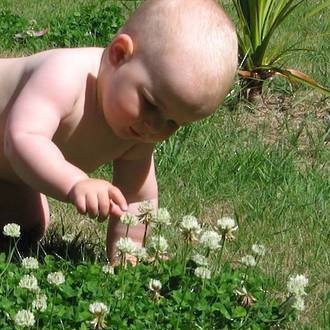
Your child was born full of wonder. Everything seen, tasted, touched, smelled is a first time experience met with exploration.
These experiences lay the foundation of brain development and learning. What gets emphasized as important in the first 5 years of life, actually shapes how the brain functions.
Connecting to nature everyday is a key environment for wonder. Even more than wonder, studies show that time outdoors supports your child in every major developmental way - intellectually, emotionally, spiritually and physically. This is reflected in better creativity and problem solving.
Time in nature has also been shown to reduce ADD symptoms as well as improve social relations, reduce stress, and increase well-being.
The key to getting all the benefits is to make sure you and your child get frequent and very regular doses.
This is fantastic news for you as a parent, because it is something that you can provide so beautifully each day. You do not need wilderness to get the benefit of nature. A tree and a patch of grass will do perfectly.
1. Visit local festivals, gardens, zoos, aquariums or animal refuges where other families are enjoying being out in nature… with a camera!
Sometimes we just need to feel apart of group that loves nature, in order to see how others enjoy nature. Snap a picture of ideas that you or your children seem interested in so you can replicate it in your future outings. I took Hope to the beach one day. She heard the family near us say that all the white kids seem to be having fun. Hope hates racism, but noticed the disappointment on their little girl's face. Hope got up and took it upon herself, to make sure that girl learned how to have some fun on the beach.
She told the parents that on her first trip to Florida she was so concerned about the dirt in the water that she almost missed out on having fun at the beach too. They made drizzle castles and played in the sand and Hope got the whole family to run from the waves as they came in, and asked if they had a camera. She started taking pictures and the family turned into typical beach goers and started posing. Within a few minutes they were enjoying their day at the beach. Sometimes it takes another person to give you some ideas then you can just roll with it. Your kids will find ways to have fun. Which brings up another thing to use your camera for. Taking pictures of your family or tribe always amps up the fun.
People say that the birds will tell you all sorts of stories about the world. I have got to tell you that I have never understood that quote. However, how many stories can you hear? Turn on the spy skills to see how following the sound of all the wildlife will lead you to the wildlife that love to live in the wild if they can become a nature spy. They need to quiet themselves and stay hidden in order not to scare the animals away.
3. COLLECT NATURE’S TREASURES
Collect small pieces of shell, stones, flower parts and leaves are all fair game for creating nature art or to stay and play awhile. Give children time to enjoy and explore anything that captures their attention. Learn some interesting facts about the native plants and berries that can be useful or enjoyed on your hike. So much can be done with cattails creatively and nutritionally. My great grandma taught me about cattails in the ways that they enriched the lives of the local indians since I have always been interested in the stories in history.
4. JUST ADD WATER
Water in any outdoor environment makes play so much fun. Containers, or a small hose or sprinkler bring the idea of flow to your child.
5. Watch the sky
Where is the wind coming from? Hope was always mesmerized by seeing the wind. What shapes do you see in the clouds? Looking at the cloud shapes always focused and calmed my boys. Can you find the sun? It has a lot to do with whether the boys could take their shirts off as they explored. The moon? Well it changes the forests quite a bit and the wildlife that come out at night are totally different. As your children grow, night hiking is a great way to explore nature.
Watching the sky is also a great way to keep the sense of being part of something incredibly big and beautiful.
When you realize how simple yet powerful daily outdoor time can be for your child, you will find many 'reasons' to play in that world. And, you yourself will get the benefit of the time spent in the fresh air.
You see as you create space for your child to be in wonder, you get some of that magic for yourself and feel more rested and less stressed.
Explore the Great Outdoors with Your Child
by Donna Satterlee, Grace Cormons, and Matt Cormons
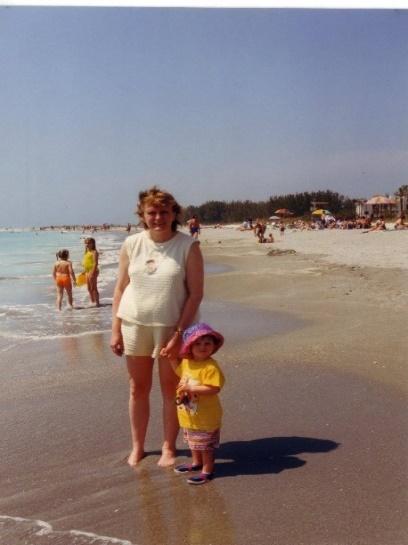
Babies are natural explorers. Let the baby discover, the learning will follow. Babies use all their senses to explore. They look and listen to observe what is happening around them, touch what they can reach, smell the fresh scents of nature, and occasionally taste when given permission. They run, jump, dig, and climb as they discover new places.
For a baby, everything is new—even the tiniest things are interesting and exciting. In today’s entertainment-driven world, exploring the outdoors is an opportunity for children to actively engage in learning. Here are a few steps you can take to guide children’s exploration of the great outdoors.
Let children choose what to explore.
Let Have you ever gone on a wildflower hike with your kids? Not only is a fun way to get outside and explore, but wildflowers can also be used in so many fun crafts and projects! Today, we have Robin Lloyd, Colorado mom of three, here sharing tips on how to make the most of your wildflower hike and how to turn your wildflower treasures into beautiful bookmarks with your kids. Enjoy!
Explore safely.
Join your children in the fun if they want you to and keep an eye on them. Before you begin, dress appropriately and teach your child the basic safety rules of the outdoors. Simplicity is often the key to establishing safety rules, and there is usually no need to restrict children. They rarely do something that makes them uncomfortable unless someone is urging them on or daring them.
Ask open-ended questions.
As children explore on their own, remain involved. Ask about their discoveries. Ask open-ended questions they can understand and answer with their observations. “What did you find? Oh, a bug? What does it look like? How does it move?” You do not have to know all the answers to children’s questions. Discuss what you see—the shape of leaves, the color of the soil, the movement of the grasses. The more your child observes, the more the world around him will make sense. Discovering how to learn through observation is important. Your child doesn’t have to know the names of all the plants and animals he finds. He will learn through his observations. You can even suggest he make up descriptive names of his own.
Touch, lift, look under.
Children need to touch the natural world to understand it more fully. In some cases, gently touching an object with one finger may be helpful. For example, gently nudge a frog or a grasshopper to help a child learn how animals move. When possible, though, examine an object from all sides. Looking carefully at the underside of a log and then carefully replacing it, for example, helps children understand that creatures live under the log and that not disturbing the creatures’ habitat is important.
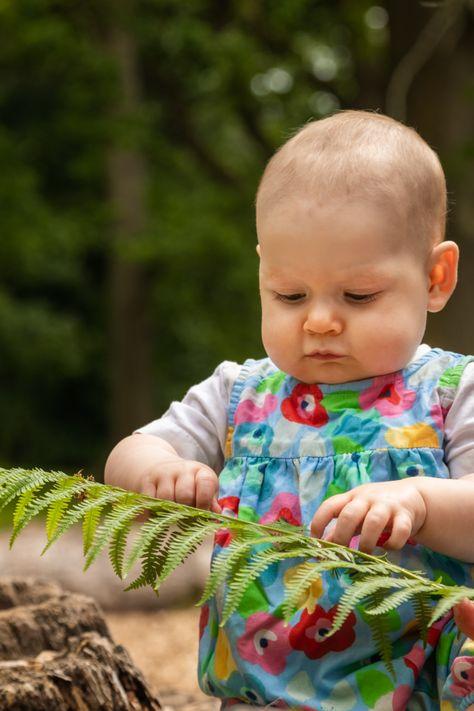
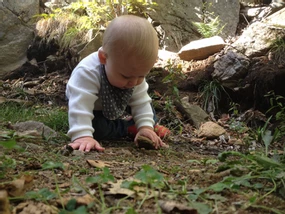
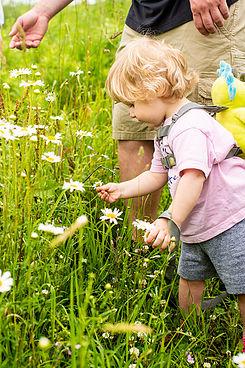
Guide children to draw conclusions from the observations they’ve made.
The best learning occurs when children come to conclusions for themselves. It would be easy to draw on your own knowledge to say, “It’s fall now. See, the leaves are red. Remember that they used to be green?” Instead, try asking questions or describing what you see, feel, hear, and smell. “Do you remember what color the leaves were last time we took this walk? What do you see now?” This modeling will help your child learn to use her own senses when exploring. Remembering and sharing helps a child learn, and shared memories bring cohesiveness as a family.
Some Cautions
Although we want children to explore at will, there are certain precautions that you will need to take. Teach children to:
• Be aware of the environment and the creatures that live there.
• Always watch where they put their hands and feet. If they left shoes outside, make sure they empty their shoes before putting them back on.
• Use clear cups and look before they drink. No one wants to accidently drink an insect!
• Be wary of brown recluse spiders (also known as violin, or fiddleback, spiders), black widow spiders, scorpions, and poisonous snakes.
• Be cautious when lifting boards or rocks to find animals and insects. Also be careful to observe what is living there without disturbing their environment.
• Recognize poison ivy, poison sumac, and poison oak. If you or your child comes into contact with any of these plants, scrub the exposed area with dish detergent or another strong soap.
Also prepare yourself and your child to encounter insects and stains.
• Wear old clothes you don’t mind getting dirty.
• Wear light-colored clothing to keep insects at bay. Some insects are attracted to dark colors.
• Wear a scarf or hat when walking through the woods.
Recycling Blocks to add to the fun
The most versatile children’s toy is also a toy that has infinite possibilities for loose parts play. There are so many ways to create your own building block sets, so many ways to embellish old or thrifted wood block sets to make them playable in an all-new way, and so many ways to upcycle wood blocks so that you can enjoy them in brand-new ways. Here are just a few of my favorites!
Create Your Own Building Blocks
ice blocks. Encourage kids to spend time outdoors in the cold by surprising them with a fun new toy! Use silicone molds or cake pans to freeze a collection of blocks (dye with food coloring for even more fun!). Use milk or juice cartons to create a set of giant blocks for igloo-building!
wooden blocks from scratch. Put your woodworking skills–and those fancy tools!–to good use.
DIY Tetris. Technically you’re not making these from scratch, but you are turning them into a completely new type of block. Haven’t you always wanted to play real-world Tetris?
rainbow square. While you have the cubes out, also DIY this set of blocks that are good for puzzling, patterning, and stacking.
pallet wood building blocks. Yes, I know pallet wood is pretty gross, so don’t let your kids lick it or anything, but there is no better large outdoor toy than a big set of pallet wood building blocks. These blocks are especially fun in a sandbox or the dirt area where the kids play with their toy trucks.
pyramid blocks. These are extraordinary blocks that any kid would be thrilled to receive.
interlocking blocks. The notches cut into these blocks allow them to be connected in gravity-defying ways.
giant interlocking blocks. Let the fort-building begin!
giant Jenga. Just… please be careful when these inevitably fall. They are REALLY big!
tree blocks. Tree blocks are the natural alternative to pallet wood blocks. You can even take them inside! Take extra care to cut the flat sides of these blocks nice and parallel.
baking soda blocks. These sculpted blocks would be a great addition to small world play.
stacker. DIY the ultimate in baby toys!
soft blocks. If your baby can’t be trusted with wood just yet, here’s a set of soft blocks to sew.
100 Ways to Love the Moment
Since I started the Love the Moments Challenges back in January 2011, I have found many ways to enjoy moments both with, and without my kids. It’s less about doing things and more about being aware; weaving moments into to the day as it happens creates a rich texture to life that brings much enjoyment and satisfaction. When I put this list of 100 love the moment moments together, many of them seemed so small, even too small to include. But then, these little things do matter and they add up. In a way, putting these small joys in a list gives them a voice which helps me to recognise and look for them so they don’t get drowned out in the loudness of…busyness, stuff, things.
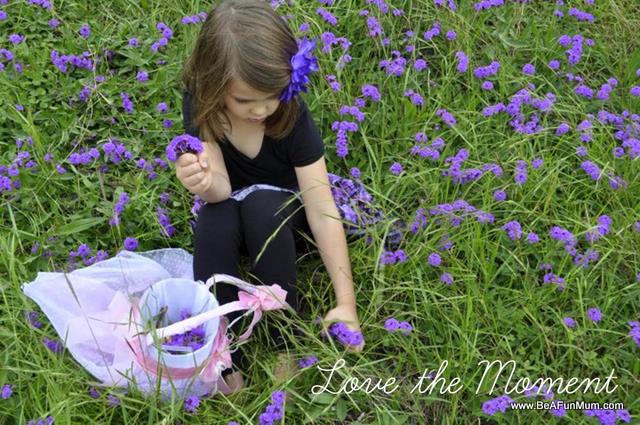
100 Love the Moment Moments
Smell a flower
Take 1 min to look in your child’s eyes to see all the different colours
Hold hands and jump around the kitchen
Get down on your child’s level and smile for no reason
Kiss your child between their eyes
Hit two spoons together to make a song
Run outside together
Have a family group hug
Read a favourite book
Snuggle your child on your lap
Listen to the birds for 1 minute
Watch for where the wind touches
Kiss your child on the nose and eyelids
Look at the stars
Tell your child a story from your childhood
Sit on the floor and watch your child play for 5 minutes
Find a special rock
Go outside and look at the sky
Feel the bark of a tree
Stroke your child’s hair
Laugh
Peel and cut up an apple and eat it together outside
Rub noses with your child
Pick your child up and just hold him/her
Breathe deeply
Skip to the letterbox
Say “I love you” just one more time
Look at the reflection in a window
Make up a new word
Look at bugs
Do butterfly kisses
Listen for animal sounds at night
Crouch down and stroke your child’s cheek
Twirl
Shake hands
Walk outside in bare feet for a minute
Throw a little water in the air and watch the drops fall
Tickle
Role play with your child for 5 minutes
Lie down on your child’s bed with them and talk or sing
Hold hands and make a family circle
Collect leaves
Eat ice from a cup
Draw colourful squiggles on a page
Make pictures in the dirt with a stick
Trace your child’s eyebrows with your fingertips
Put a flower in your hair
Write a special note to someone
Eat fresh bread, butter and honey
Start a sentence: “I like____ about you.”
Have a race
Throw a pebble in a bucket of water
Sit your child on the kitchen bench and kiss their knees
Get 3 stories and read a different line of each to make up your own
Squeeze oranges to make a cup of juice
Help your child swing on a tree branch
Look up the name meaning for the members of your family
Do a piggy back
Blow up 5 balloons
Look at the moon
Go outside when the sun sets
Leave a bit of honey bread for the ants
Colour in together
Make a cubby under the table
Write your child’s name 5 times on a piece of paper
Be still and listen for 2 minutes
Find an interesting looking stick
Sprinkle flower petals in a bowl of water
Walk on tippy toes
Read a book outside
Pick wild flowers
Draw a rainbow
Look at the clouds
Watch moths on an outside light
Light a candle
Study raindrops or dew
Visit a garden
Take an umbrella outside, rain or shine
Find a bendy road
Watch your child sleep
Stand in the sun and feel the warmth for a few minutes
Draw a heart: one for each of your children and leave it on their bed
Draw a picture with different colours of blue and green to represent the sea
Wear a necklace
Walk hand in hand with your child
Collect shells or pebbles and put in a glass of water
Play peek-a-boo or hide and seek
Look at the shadows
Have a picnic on the grass outside your house
Do something out of the ordinary
Greet your loved ones exuberantly
Tell a story while you are driving in the car
Make a rhythm with two sticks
Smile
Look at my child directly for 10 seconds when they speak
End a sentence: “______ makes me happy.”
Use expression
Do a High-Five
Stand under a large tree (and look up)
I have found many of the items in the list can be turned into a longer activity, but the idea is not to be overwhelmed; most only take a minute, or even just seconds. It’s all about embracing what each day brings and having ideas up your sleeve to make the most of the moments.
{you can print this list in PDF form if you like}

Tree Activities
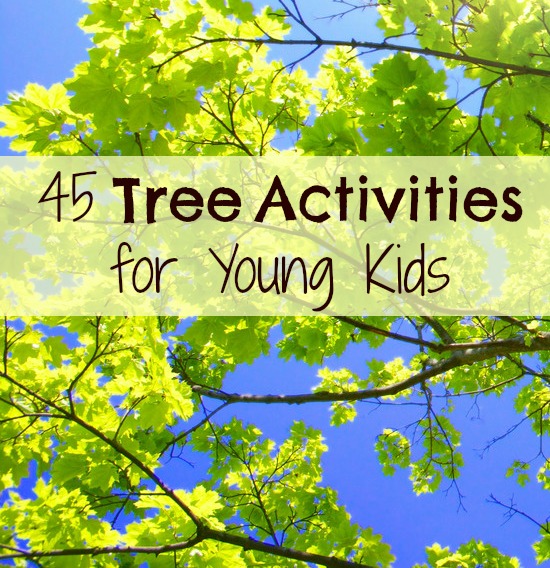
EXPLORE TREES WITH TREE SCIENCE ACTIVITIES

Document the Changing of Seasons in Pictures (Mama Smiles)
Go On a Tree Hunt (KC Edventures)
Explore the Texture of Bark (Freshly Planted)

Collect and Examine Flowers and Seed Pods from Trees (Teach Beside Me)
Collect and Sort Different Parts of Trees (Inspiration Laboratories)
Look Closely on New Buds on Trees (Mama Smiles)
Learn About Trees and the Weather with Pine Cones (Science Sparks)

Learn How Leaves Get Water, along with other wonderful leaf activities (Train Up a Child: Learn As We Go)
Learn through Action with Leaf Pounding (Not Just Cute)
Observe and Record the Changing of Seasons with Hand Print Trees (Stay at Home Educator)
Learn How Old a Tree Is (Life at the Zoo)
Make a Neighborhood Tree Guide (Kid World Citizen)
SENSORY TREE ACTIVITIES

Pine Cones and Tree Branches (Fun-A-Day)
Pine Needle Discovery Bottles (Teach Preschool)
Spring Tree Play Dough (Fantastic Fun and Learning)
TREE CRAFT ACTIVITIES
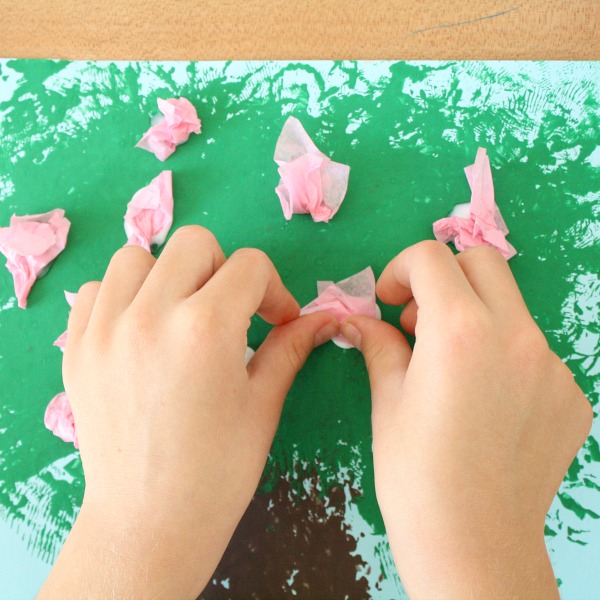
Spring Tree Art Project (Fantastic Fun and Learning)

Fall Tree Art (Fantastic Fun and Learning)
The Four Seasons Tree Crafts (Red Ted Art)

Paper Bag Tree Sculptures (Draw the Line At)
Autumn Trees Made with Real Leaves (Housing a Forest)

Bleeding Tissue Paper Fall Tree Craft (Fantastic Fun and Learning)
Fall Tree Loofah Painting (Fantastic Fun and Learning)
Stamp Painted Fall Tree (Fantastic Fun and Learning)

Winter Tree Craft Project (Fantastic Fun and Learning)
TREE ART IDEAS

The Tree of Life Kids Art (Here Come the Girls)
Painting with the Parts of a Tree (Fun-A-Day)
Fingerprint Spring Tree (Housing a Forest)
Q-Tip Fall Tree (Mess for Less)
Fall Fingerprint Tree (Mess for Less)

Spring Cherry Tree (Housing a Forest)
Painting Trees with Egg Cartons (Teach Preschool)
Four Seasons Tree Painting with Free Printable (123 Homeschool 4 Me)
Yarn Stamped Fall Tree (No Time for Flashcards)
Puzzle Piece Tree (I Heart Crafty Things)
TREE-INSPIRED PLAY ACTIVITIES

Learning About Trees with Wooden Train Tracks (Play Trains)
Cardboard Tree House (Spoonful)
Tree Decorating (Red Ted Art)
LEARNING ACTIVITIES

Alphabet Apple Tree Letter Activity (No Time for Flashcards)
Letter T Craft (Counting Coconuts)
Make Your Own Tree Memory Game (Kitchen Counter Chronicle)
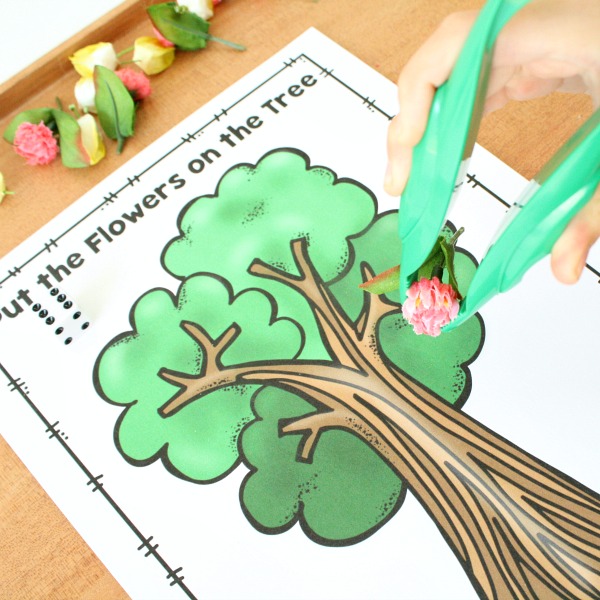
Free Printable Tree Math (Fantastic Fun and Learning)
Counting Sticks (Montessori on a Budget)
BOOKS ABOUT TREES
We have a full list of book recommendations that includes both fiction and nonfiction books about trees, but here is a quick reference list.
The Happiness Tree: Celebrating the Gifts of Trees We Treasure
This is the Tree: A Story of the Baobab
Head over to the trees book list to read the book summaries and learn more about each book.
BOOK-RELATED ACTIVITIES

Lorax Tree Snack (East Coast Mommy)
Apple Tree Paper Plate Craft (Reading Confetti)
There is a Tree Book Synopsis and Free Journal Printable (The Wise Owl Factory Book a Day)

StickFiggy Friendship Activities and Tree Play Area (JDaniel 4’s Mom)
Hand Print Trees (Reading Confetti)
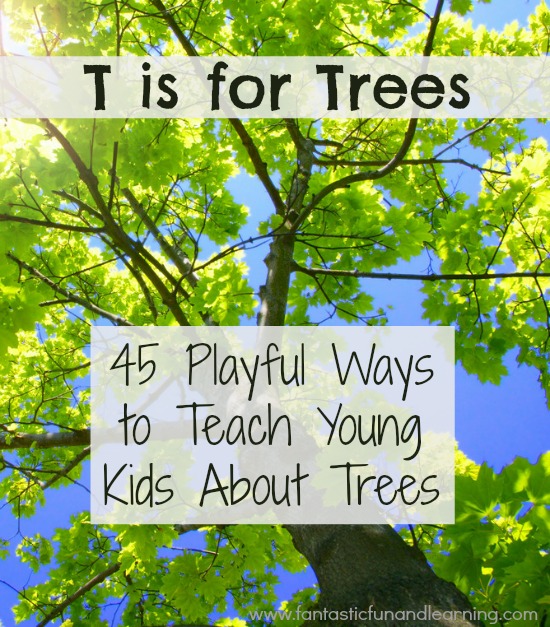
The next post in our T is for Trees series will include some of our favorite books about trees.
Superscript
Incredible Horizons
Since 2001, we have provided solutions for happy and healthy families with nature being our focus and love.
Making Art Possible
This is a FAQ description. Add more detail about this service, such as benefits, appearance, components and value
Family Activities
This is a FAQ description. Add more detail about this service, such as benefits, appearance, components and value
Nature Play that Rocks
This is a FAQ description. Add more detail about this service, such as benefits, appearance, components and value
Projects Under Development
Wildlife Haven and Outdoor Experiences- Finger Lakes
This is a FAQ description. Add more detail about this service, such as benefits, appearance, components and value
Superscript
Block title
This is a block description. To edit, click and type the text or replace it with your own custom content
Day 1Enter your date |
|
10am First sessionSpeaker name |
|
12pm LunchCoffee and cookies |
|
1pm Second sessionSpeaker name |
|
3pm Third sessionSpeaker name |
|
5pm Fourth sessionSpeaker name |
Day 1Enter your date |
|
10am First sessionSpeaker name |
|
12pm LunchCoffee and cookies |
|
1pm Second sessionSpeaker name |
|
3pm Third sessionSpeaker name |
|
5pm Fourth sessionSpeaker name |








